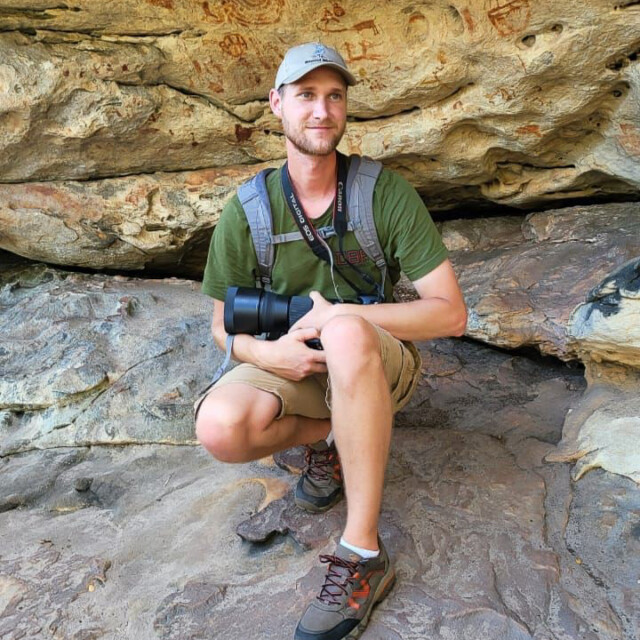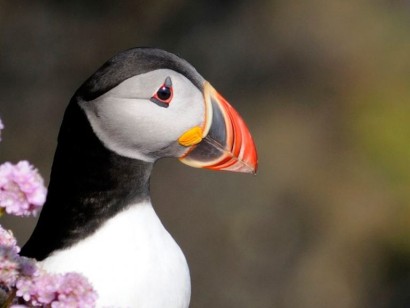Grand Newfoundland Trip Report (Jun 4 – 15, 2025)
Over the course of eleven days, our Grand Newfoundland tour took us from the vibrant city of St. John’s to the stunning natural beauty of Gros Morne National Park, blending world-class birding with breathtaking landscapes and rich cultural experiences. We explored boreal forests, rugged coastlines, and remote ecological reserves, spotting iconic seabirds like Atlantic Puffins and Northern Gannets, rarities like the Pink-footed Goose and Steller’s Sea-Eagle, and even terrestrial highlights like Woodland Caribou and multiple Moose. From Cape Spear to Cape St. Mary’s, Western Brook Pond to the Tablelands, our group enjoyed unforgettable wildlife encounters, scenic hikes, coastal boat tours, and warm camaraderie, making this journey through Newfoundland a truly memorable adventure.
Our tour began with a meet-and-greet in the lobby of the JAG Hotel in St. John’s, where we would be spending the next three nights. After settling in, we drove to the nearby VU Restaurant for our first group meal. Over dinner, we made formal introductions and shared our hopes for the days ahead.
Day number two began with a lovely breakfast before we set off birding around the Goulds. Our first stop was Cochrane Pond Road, where an Eastern Kingbird perched obligingly in a nearby tree as soon as we parked. Other highlights from the morning included Great Horned Owl, Mourning Warbler, and Alder Flycatcher. After a quick bathroom break at Tim Hortons, we continued on to Bidgood’s Park, where both Boreal and Black-capped Chickadees put on a show for the group. Before our afternoon boat tour, we enjoyed a picnic lunch, during which a Northern Parula was spotted by one of the guests. Then we boarded the boat to explore the Witless Bay Ecological Reserve. As we sailed out of the bay, our very first bird was a beautiful Bald Eagle perched high in a treetop—a striking start to the tour. On the water, lifers came quickly for many: Atlantic Puffins, Razorbills, both Common and Thick-billed Murres, and Black-legged Kittiwakes gave wonderful views.

Atlantic Puffin © Vernon Buckle

Razorbill © Josh Dewitt
Day number three began with a visit to Cape Spear, Canada’s easternmost point. We arrived around mid-morning and watched for passing seabirds. The first of many Northern Gannets soared by offshore. We spent the rest of the day exploring ponds and green spaces around the city, turning up highlights like Osprey, Tufted Duck, and the long-staying Pink-footed Goose—always a treat.

Osprey © Vernon Buckle

Tufted Duck © Vernon Buckle
Day number four took us south to St. Michael’s, where we scoped a nearby island and found a Northern Fulmar. Just as we got it in view, the island was swallowed in fog. We pressed on to La Manche Provincial Park and were rewarded with a close Magnolia Warbler. At Cape Broyle, we watched a few Northern Pintail among other waterfowl, and later admired a massive mixed gull flock near the beach and fish plant. Lunch was enjoyed at a picnic table overlooking the Atlantic. In the afternoon, we headed to Renews where Arctic Terns were seen nesting on the inner harbour island. A short drive brought us to the Mistaken Point Interpretive Centre, where we were introduced to the area’s globally significant fossil beds. We finished the afternoon along Cape Race Road, where Willow Ptarmigan offered excellent views. That evening we reached Trepassey and settled in at the Edge of Avalon Inn.

Willow Ptarmigan © Vernon Buckle
Day number five began with a short pre-breakfast walk along a nearby trail. A Fox Sparrow gave great views as it sang close by, and a Snowshoe Hare quietly fed at the forest edge. After a buffet breakfast, we made our way toward Cape Pine Road and St. Shott’s. Although weather conditions were poor, we still found a Horned Lark and one lone Common Eider near the beach. Then came the rain—steady and relentless. We pushed on to St. Vincent’s, where the elements did little to dampen the thrill of a close Humpback Whale surfacing just offshore near the picnic area. After a quick lunch, we drove through heavy rain to St. Bride’s, where we spent the night at the Capeway Inn.
Day number six started with a pre-breakfast stroll near Cuslett, followed by a hearty breakfast at Da Bird’s Eye Restaurant. Then we were off to Cape St. Mary’s Ecological Reserve. It’s hard to put into words just how awe-inspiring this place is. Thousands of Common Murres filled the air and cliffs, joined by Black-legged Kittiwakes and the tour’s headliner—Northern Gannets—at the famed Bird Rock. We also spotted both Great and Double-crested Cormorants, and distant Sooty and Manx Shearwaters offshore.

Common Murre © Vernon Buckle

Northern Gannet © Vernon Buckle

Our group at Cape St. Mary’s
Just as we were enjoying lunch at the visitor centre, word came that the now-famous Steller’s Sea-Eagle had been relocated near North River, about 90 minutes away. The group unanimously agreed to go. On the way, we were thrilled to encounter three Woodland Caribou just off the roadside. Spirits were high when we arrived—until we learned the eagle had flown just five minutes earlier. We gave it an hour, scanning the area thoroughly, but had no luck. Disappointed but understanding that this is the nature of birding, we continued on to Terra Nova National Park, where we spent the night at the Clode Sound Motel. That evening, a few guests went out in search of a moose and were rewarded quickly—just ten minutes from the motel.
Day number seven began with a pre-breakfast walk near the motel, where we enjoyed the peaceful forest setting and spotted a few early risers. After breakfast, we headed out on the Ochre Hill Trail, where we had great looks at an Olive-sided Flycatcher and also had our first Canada Jay. As we returned to the vans, incredible news arrived—the Steller’s Sea-Eagle was back at the same spot as the day before. At 1:02 p.m., we pulled into North River—and there it was. Success at last! The group was overjoyed, the relief palpable after the previous day’s miss.

Steller’s Sea-Eagle © Vernon Buckle
Day number eight began with a final morning in Terra Nova National Park. We explored Blue Hill Pond Trail and Louil Hill Trail, where the highlight was a Humpback Whale breaching just offshore—seen clearly from the parking lot. Afterward, we visited Cull’s Harbour Bridge, where several Caspian Terns showed well. Our route then took us westward toward Gander. Unfortunately, an afternoon of birding was disrupted by wind and rain, but we made the best of it with a visit to the 9/11 memorial exhibit at Gander Airport and a look at the town’s aviation history displays. Afterward, we continued on to Grand Falls-Windsor for dinner and our overnight stay.

Humpback whale breeching © Josh Dewitt
Day number nine began with breakfast at the Mount Peyton Hotel, followed by a quick visit to the local water treatment plant where we saw Wood Ducks and a mix of other waterfowl. We spent the rest of the morning birding the Corduroy Brook trails, where highlights included Veery, Mourning Warbler, Tennessee Warbler, Ovenbird, and Red-eyed Vireo. After lunch, we visited the Salmonid Interpretation Centre before beginning the scenic drive to Rocky Harbour in Gros Morne National Park.

Our group, Gros Morne

Ovenbird © Vernon Buckle
Day number ten was spent exploring Gros Morne. We started the morning at Berry Hill Campground and the Berry Head Pond Trail, where we found a surprisingly cooperative Swainson’s Thrush and a good variety of vocal warblers. By mid-morning we reached Western Brook Pond for our much-anticipated boat tour into the glacier-carved fjord. Although fog and rain cut the tour short, we still managed a glimpse of the dramatic cliffs. Along the trail we saw Pine Grosbeak, Lincoln’s Sparrow, Blackpoll Warbler, and Common Yellowthroat—and another moose. On our return, we made a brief stop at Parsons Pond to observe Bank Swallows before enjoying a beautiful sunset back in Rocky Harbour.

Swainson’s Thrush © Vernon Buckle
Day number eleven, our final full day, began with a drive to Norris Point, where we enjoyed a stunning panoramic view of the Tablelands. We birded along the way at Millbrook and the Lomond River Trail, where highlights included Blue-headed Vireo, Cape May Warbler, and another Olive-sided Flycatcher. Some guests were lucky enough to spot a Ruffed Grouse during our picnic lunch. In the afternoon, we visited the Discovery Centre and then walked the Tablelands Trail, taking in the desert-like landscape, serpentinized rock, and unique flora. On our drive back to Deer Lake, we spotted one final moose—an appropriate sendoff. That evening, over a farewell meal at the Deer Lake Motel, we shared highlights and said our goodbyes after a truly memorable Newfoundland adventure.
Grand Newfoundland Birding Tour (Jun 4 – 15, 2025) eBird list




